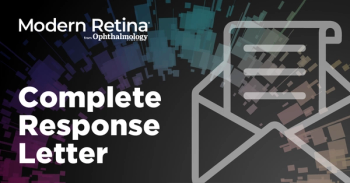
White coat syndrome and retinal vein occlusion
A recent case-control study found that white coat hypertension (WCH) may be associated with acute retinal vein occlusion (RVO), especially in patients who are not being treated for hypertension,1 according to first author Shuichiro Aoki, MD. He is from the Department of Ophthalmology, University of Tokyo Graduate School of Medicine, Tokyo.
WCH is defined as that in which the blood pressure (BP) measured in the doctor’s office is high, but that measured at home is normal. This scenario occurs in from 10% to 30% of patients with elevated BP in the office.2,3
Another state of the BP, the white coat effect (WCE) or white coat uncontrolled hypertension (WCUH), behaves similarly in the office and at home in patients receiving medication for hypertension.4
The investigators explained that WCH or WCUH was not treated in the past because studies reported no or a weak increase in cardiovascular risks or mortality.5-7 However, that may not be the case, with more recent studies suggesting that WCH may be linked to targeted organ damage and increased mortality.8,9
“This evolving understanding raises the possibility that WCH could also be a risk factor for developing RVO,” they said.
Despite this, they explained, a literature review did not identify studies focused on the relationship between WCH and RVO. The current aimed to fill that gap by testing the hypothesis that patients with RVO may have a higher prevalence of WCH or WCUH than those without RVO.
Retrospective case-control study
Patients were included who were 40 years of age or older and diagnosed with acute-phase RVO. Patients who had other pathologies served as controls without RVO. The BP was measured in the office during their initial visit, and information about home BP and the use of hypertensive medication was obtained during the interviews. After 1:2 age and sex-matching between the RVO and non-RVO groups, the proportions of hypertensive cases were compared as were the subgroups with or without hypertensive medication, the authors recounted.
A total of 51 patients with RVO and 102 without RVO were included.
Aoki and colleagues reported, “For the entire cohort, the RVO group exhibited a significantly greater proportion of WCH and sustained hypertension compared to the non-RVO group. In the subgroup without hypertensive treatment, the proportion of WCH or sustained hypertension was still significantly higher in the RVO group. However, in the subgroup receiving hypertensive treatment, the proportion of WCH or sustained hypertension was higher in the RVO group than in the non-RVO group, though the difference did not reach significance.”
The investigators found that WCH was seen more often in patients with RVO than in those without RVO. “Our results may help ophthalmologists address high BP detected in patients with RVO. Although there are a large number of WCH patients,10 the management of WCH is still not standardized. Therefore, ophthalmologists need to clarify the impact of WCH and WCUH on RVO or other retinal vascular diseases and collaborate appropriately with internists for optimal assessment and management of systemic BP and ocular pathologies,” they commented.
References
Aoki S, Suzuki H, Ueda K, et al. White coat hypertension in acute retinal vein occlusion. Int J Retin Vitr. 2024;10:65;
https://doi.org/10.1186/s40942-024-00584-y Franklin SS, Thijs L, Hansen TW, O’Brien E, Staessen JA. White-coat hypertension. Hypertension. 2013;62:982–7.
Nuredini G, Saunders A, Rajkumar C, Okorie M. Current status of white coat hypertension: where are we? Ther Adv Cardiovasc Dis. 2020;14:1753944720931637.
Cohen JB, Lotito MJ, Trivedi UK, Denker MG, Cohen DL, Townsend RR. Cardiovascular events and mortality in White Coat Hypertension. Ann Intern Med. 2019;170:853–62.
Spannella F, Filipponi A, Giulietti F, et al. Prognostic role of masked and white-coat hypertension: 10-Year mortality in treated elderly hypertensives. J Hum Hypertens. 2019;33:741–7.
Hänninen M-RA, Niiranen TJ, Puukka PJ, Johansson J, Jula AM. Prognostic significance of masked and white-coat hypertension in the general population: the Finn-Home Study. J Hypertens. 2012;30:705.
Figueiredo VN, Martins LC, Boer-Martins L, et al. The white coat effect is not associated with additional increase of target organ damage in true resistant hypertension. Med Clin. 2013;140:1–5.
Mancia G, Facchetti R, Vanoli J, Dell’Oro R, Seravalle G, Grassi G. White-coat hypertension without organ damage: impact on long-term mortality, new hypertension, and new organ damage. Hypertension. 2022;79:1057–66.
Cao R, Yue J, Gao T, Sun G, Yang X. Relations between white coat effect of blood pressure and arterial stiffness. J Clin Hypertens. 2022;24:1427–35.
Gorostidi M, Vinyoles E, Banegas JR, de la Sierra A. Prevalence of white-coat and masked hypertension in national and international registries. Hypertens Research. 2015;38:1–7.
Newsletter
Keep your retina practice on the forefront—subscribe for expert analysis and emerging trends in retinal disease management.
















































